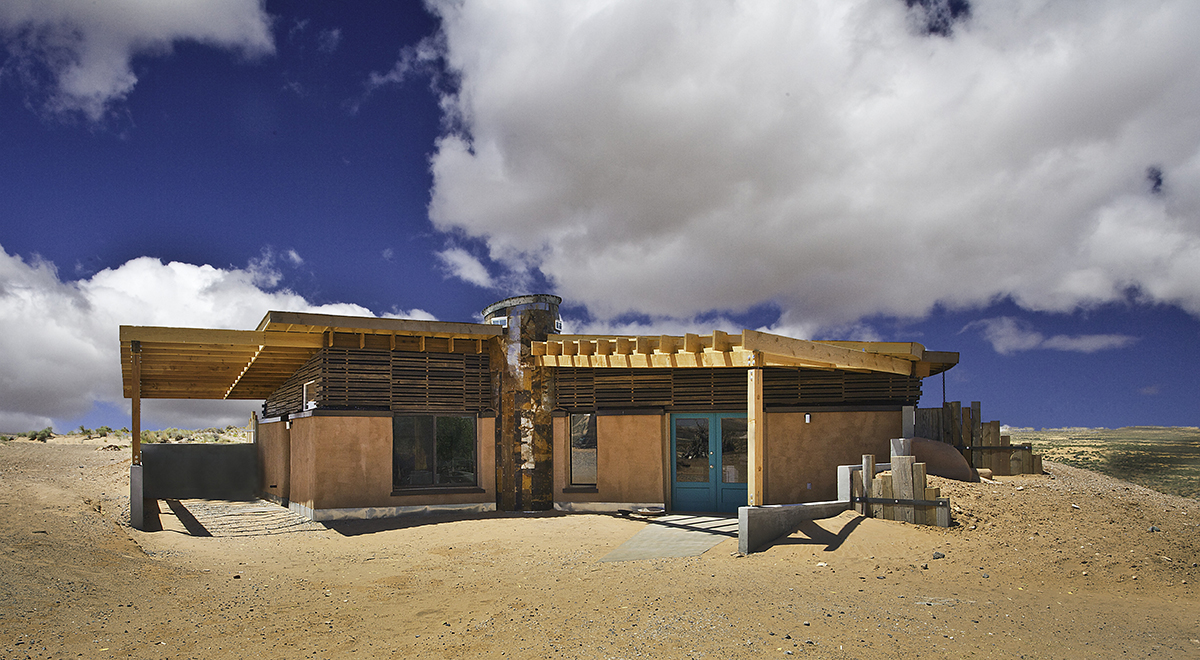


As an elderly couple with limited mobility, these clients required a home with full ADA-accessibility to accommodate their needs. The solution was a home that is as easy to navigate as it is efficient. An open kitchen and living space and ADA-approved bathroom/shower allows the fullest and most independent living possible. In addition making the house accessible, the students continued to explore and perfect the passive cooling and heating techniques tested on past projects, eventually incorporating five different systems to ensure the house would function properly through Bluff’s scorching summers and frigid winters. These include an insulated thermal berm wall, a straw bale wall, a solar oculus for natural ventilation and cooling, a ventilated second roof and a rocket stove. Resembling a ‘terra dome‘ structure, an insulated earth berm composes nearly the entire southern faced curve. As one of the most efficient and naturally constructed form of insulation, each layer is crucial for proper insulating during the winter and cooling in the summer. Under 3 feet of soil lies five layers, each with a specific function, beginning with straw, followed by cardboard, waterproofing membrane, foam, gravel and topped off with terrace landscaping. Opposite of the berm, the orthogonal northern walls are constructed of straw bale and finished with a natural plaster. What began as an experimental solar chimney transformed into what is now referred to as the solar oculus. Designed aesthetically as a light well and functionally as a natural ventilation system, during the summer, the lower clear story windows and oculus vents can be opened to allow the hot air to escape. As a back up cooling method, an evaporative cooling system was installed with ducts running through the berm and into the house. Lying at the center of the house is a mass rocket stove. The stove, constructed with a 55 gallon barrel and natural cob, plays the role of a mass heating source as well as a nice sitting bench in the living room. Strategically placed along a concrete block wall, it takes just a day of fueling to radiate the heat into the surrounding spaces. During winter months, the thickly insulated berm and straw bale provide an insulated barrier protecting from heat loss.



